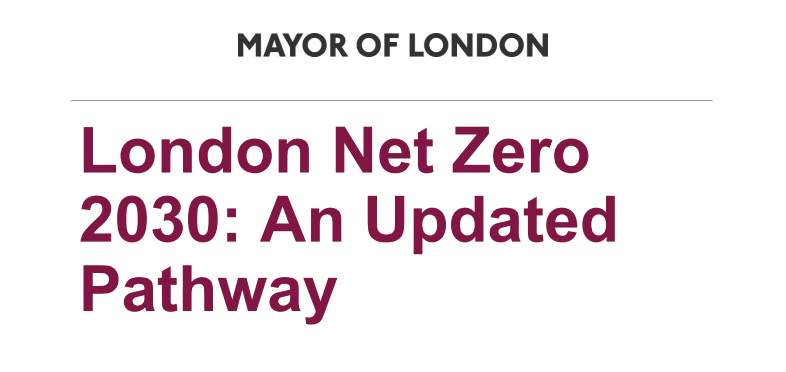This document explains the key issues, benefits, and challenges from moving London’s Net Zero target forward from 2050 to 2030. The Mayor’s preferred pathway for achieving the 2030 target is the Accelerated Green pathway, which now replaces the previous trajectory in the 1.5°C Climate Action Plan.
In 2018, the Mayor of London, Sadiq Khan, published his London Environment Strategy and 1.5°C Climate Action Plan. These set out pathways, policies, and actions needed to achieve a Net Zero London by 2050.
Since then, the science has shown the need for even more urgent action and the stark consequences of failing to act. Recognising this urgency, the Mayor has declared a climate emergency for London and has brought forward by 20 years the target for London to be Net Zero by 2030. This puts London at the forefront of global cities and UK action on climate change. The 2030 Net Zero target is central to the London Recovery Board’s Green New Deal mission.
 To support this increased ambition, the Greater London Authority (GLA) commissioned experts at Element Energy to analyse pathways for London to reach Net Zero more quickly. Their report ‘Analysis of a Net Zero 2030 Target for Greater London’ and their Net Zero 2030 Tool explore four possible pathways that London could take.
To support this increased ambition, the Greater London Authority (GLA) commissioned experts at Element Energy to analyse pathways for London to reach Net Zero more quickly. Their report ‘Analysis of a Net Zero 2030 Target for Greater London’ and their Net Zero 2030 Tool explore four possible pathways that London could take.
Element Energy’s analysis shows that under all pathways it is possible to accelerate action and radically reduce carbon emissions with the right ambition, leadership, powers, and funding. By 2030, we could cumulatively save between 13 and 48 million tonnes of carbon dioxide equivalent (MtCO2e) compared to the previous 1.5°C pathway, increasing to between 102 and 248 MtCO2e by 2050. As well as helping avoid catastrophic climate change, many other benefits can be realised. These include supporting tens of thousands of jobs; improving health through better air quality and more active lifestyles; reducing inequalities; and improving quality of life for all.
Based on the analysis by Element Energy, this document explains the key issues, benefits, and challenges from moving the target forward to 2030. It explains that the Mayor’s preferred pathway to achieving 2030 is the Accelerated Green pathway and the rationale for that choice. This pathway now replaces the previous trajectory in the 1.5°C Climate Action Plan.
Following the publication of the Element Energy report and modelling, the GLA will discuss the implications with key stakeholders, including London boroughs, the UK Government, businesses, civil society, and Londoners. It will guide the development of policies and programmes in the GLA Group, and the work of the Green New Deal mission as part of London’s recovery from COVID-19. It will help us communicate with Londoners about what is involved in reaching Net Zero. There is great public support for climate action, but we need to build public consensus around the specific policies to get us there. This report is an important contribution.
